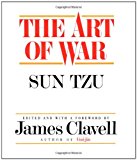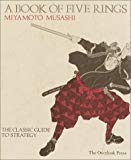Weaponry, Ground, Air and Water Warfare in WWI
World War I was called the Great War because so many countries were involved, and advanced weaponry was developed. The British and the Germans were the ranking pioneers in weapons development. All the countries that participated in the war used different types of attacking methods to destroy their enemies. The weapons that determined the outcome of World War I were tanks, airplanes, submarines, and very large guns called heavy artillery.
German artillery ranged from a twenty-millimeter assault rifle to a four hundred and twenty-millimeter long-range heavy howitzer. The two most popular were the 105mm and the 420mm (Big Bertha). Big Bertha was a giant mobile siege gun produced at the Krupp armaments factory in Essen, Germany. Its official name was the Krupp 420mm heavy howitzer, but became universally known as Big Bertha . (World Book Encyclopedia 798) This gun needed a crew of over one thousand men to fire it. It was capable of firing ten nine hundred and thirty-kilogram shells fifteen and one half miles in the air over a distance of seventy-six miles every hour. The one hundred and five millimeter heavy howitzer was a World War I relic and a mainstay of the German army. It was quite effective in its role. (World Book Encyclopedia 799) To minimize the weight of the 105mm they made it recoilless and used it as a surface to airgun also. The gun had an open back so that the gasses that would cause a normal gun to recoil would escape. The last role of the 105mm was its ability to be shipped piece by piece into the mountains for surprise attacks. Although the 420mm packed a bigger punch than the 105mm, the 105mm was put to greater use throughout World War I.
Upon the arrival of the I.C.E. (internal combustion engine) in 1885, patented by Gottlieb Daimler, people started dreaming about cars, tractors and other things we take for granted today. One man was not dreaming; he built his dream. It was a bulletproof car with a Maxim machine-gun mounted upon a revolving turret on each side of the massive metal machine. In 1889, Frederick Simms took this motor-war car to the British War Office and they rejected it. In 1914, the War Office decides that British aircraft needed to be protected from the ground. They used Frederick’s motor-war car . The Germans defended against this motor-war car by digging trenches across all the roads and land. The first armored vehicles were just cars converted into soft tanks by putting steel armor around the frame and mounting light artillery on them. In 1915 a man named Wolseley developed a 30-cwt which was made with a Lorry chassis and armored sides. That tank packed a revolving turret with a Vickers-Maxim machine-gun. Richard Hornsby and his sons manufactured the Killen-Strait armored tractor. The Killen-Strait was the first tank to have treaded metal bars linked together with pins, and was tested in front of Winston Churchill and David Lloyd George. It cut through barbed-wire entanglements and went right over the tops of trenches. This armored tractor had a major influence on future tank designs. Little Willie , the first full-fledged tank, was made from Hornsby and sons tread and armor designs.
Next came the W.G. Wilson tank, a.k.a. Mother. Mother’s weaponry consisted of four Vickers water-cooled machine-guns on the sides and a Hotchkiss machine-gun right in front. Wilson went on making a series of tanks called the Mark I, Mark II, Mark III, and Mark IV, all of which failed. The Mark V on the other hand was great because it had a six-cylinder engine; this bumped its speed up to 4.6 miles per hour. It had six men inside two frontal gunners, two side gunners one back gunner, and one man driving. Tanks have steadily improved over time. The development of heavy artillery and tanks decidedly affected the outcome of the Great War. Over the years, the element of destruction and loss of life has grown as weaponry has evolved into an amalgam of death.
The first response to the introduction of tanks during World War I was a variety of grenades and large caliber rifles that were designed to penetrate the tanks armor or to disable their tracks. Bombs and grenades were basically the main way to stop these massive tanks. In 1915, a grenade developed by William Mills was used by many British troops. The bomb had a central spring-loaded firing pin and a spring-loaded lever locked by a pin. When the Mills Bomb was thrown into the air the lever released the striker, which ignited a four-second timed fuse. When the explosive device went off the cast-iron casing shattered and produced a shower of metal fragments. More than 33 million of these bombs were issued to British soldiers. Land mines and artillery were also used. The larger rifles were originally 37 caliber and they fired certain ammunition. Particular ammunition types like shells tipped with harder alloys that improved the force to give higher velocities. The Germans developed an 88-millimeter anti-tank gun that was very effective in the war. The anti-tank gun was shaped as a hollow charged shell, which was intended to explode on impact and channel the explosive energy toward the target. As a result the penetration of the projectile was greater. These weapons had a huge impression on attacking ground machinery and stopping enormous armored personnel carriers.
Another step in World War I was air warfare. During the war, the role of airplanes and how they were used changed greatly. At first planes were only used for sport, but people started realizing that not only could airplanes be useful, but they could also influence an outcome of a war tremendously. The World War I fighters and bombers were not the greatest of planes, but they got the job done. The German C.I. airplane was used for reconnaissance and unarmed scouting. Later in the war, according to Jack Douglas they mounted a forward-firing Spandau machine-gun on the left side of the forward fuselage that was used by the pilot. The British Gotha planes were a major threat to the Central Powers. The Gotha IV and V were both equipped with two Maxim Machine-guns, a pre determined weight of bombs, and a prayer. The Gotha V carried more bombs than the IV and was a slower target. The Gotha IV carried less bombs, but it was faster and harder to shoot down. The British Royal Navy pilots loved the Sopwith Triplane. Although it had minimal offensive capabilities (one Maxim machine-gun on the side) they had five squadrons by the time one year had passed. Although the Germans trained the best pilots in the Great War, the British wound up having made some of the best planes throughout that time period.
The war was soon filled with blimps, planes, and tethered balloons. By the end of the war, planes became a symbol of fear, but they were not always treated with such respect. In the time leading up to the war, the general feeling about planes was that they were a sneaky, unfair tactic that should not be used in warfare. During The 1899 Hague Peace Conference it was put on record that the dropping or shooting of any projectiles or explosives from the air during a time of war was forbidden and was considered a crime of war. It was also decided that airplanes could only be used for reconnaissance or spying missions. Even by the beginning of the war in 1912, the use of planes in war was still prohibited by the War Office. Shortly thereafter this changed; people awakened to the possibilities of air warfare. The world soon started to realize the effectiveness of planes in war and how the control of the skies could influence the outcome.
Although the French were the first to have a working, conscripting air force and licensed fliers, their trust in airplanes still was not up to par. Their lack of trust was justified, because the planes had too many wires and no reliable motors. Soon all countries in the war effort had their own little air force. They built hangers and started to train pilots. The first bombing occurred in November of 1911. Although the Italians dropped the first bomb, very soon all countries were involved in bombing raids. It was followed by the first aerial dogfight in 1912. This consisted of a primitive exchange of pistol fire between British and German planes.
Literary fiction started to breed ideas about the use of planes in warfare. The most famous writer to explore the idea was H.G. Wells. In Germany, literary fiction preceded the actual development of warfare in the air. Rudolph Martin was a writer who predicted that the German’s future was not on the sea, but in the air. He also believed that further development in aviation would kill the importance of distance and help to lead toward the German unification of the world. Martin’s novel helped to prepare the Germans for their use of planes in the war. The fiction soon became scientific fact.
The United States was ultimately slower at developing an air force than France and Germany. On March 3, 1911, Congress appropriated $125,000 to start an air force, which consisted of five planes. The Americans organized the first squadron on March 5, 1913, in Texas City. It consisted of nine planes. Although the United States entered the war in 1917, it did not use planes in the war at that time. U.S. pilots had little or no experience in cross-country navigation. They did not have good maps and once in a while they became lost. At times they ran out of fuel and had to land behind enemy lines.
As the Americans advanced in the use of planes in warfare, so did the Germans. Initially, the Germans made no effort to hide their skepticism about the use of planes in warfare. In the beginning of the war, many Germans argued in newspaper articles and on government committees about the possibilities of warfare in the air, but the country as a whole was not quick to initiate the effort. This quickly changed however, because the development of airplanes during the war was mostly credited to the Germans. The Germans came out with advances in planes that outdid anything that France had to offer. Even though France had the largest air force in the world, they soon became second best. No matter how hard the other countries tried, the Germans were always one step ahead in airplane advances. These advances were so great that even though the Germans were outnumbered on many occasions, they still came out on top.
For instance, the mounting of a machine gun behind the propellers seemed like suicide, but the Germans came up with the idea of a timed switch that would allow the gun to fire in-between rotations. This made it easier to aim and fly at the same time. Roland Garros was an allied flier who mounted a gun in the cockpit and put protective plates on his propellers. He was trying to match the German timed device, but it was a faulty, unsafe rip-off. Another advancement used by the Germans was the introduction of luminous paint so that pilot would not fly into each other or shoot each other during night raids. The allied countries tried many times to duplicate this and many other German inventions, but failed each time. The Germans started putting up hangers and domes around its boarders. They introduced more and more types of planes. As the war went on, Germany introduced the BI-planes and Tri-planes, which made the use of one-winged planes obsolete. The more wings, the more mobility, stability, and speed the plane had. The mobility made it easier to evade gunfire or to maneuver better in dogfights. The stability made these new planes handle better in turbulence, and in reconnaissance missions the speed was most important for escaping the enemy. These new German planes dominated the skies and made lumber of the allies. The BI-plane was considered to be the best all-around plane. It was the favorite of the German Flying Ace, Manfred von Richthofen, better known as the “Red Baron The Red Baron was the best pilot in the war, and was credited with shooting down 80 allied planes. Both sides equally respected him, and when he was shot down, his enemies held a service for him to show how much respect they had. This show of chivalry was not uncommon, in the beginning of the war it was tradition to throw down a wreath if an enemy plane was shot down, to show respect and honor. However, when bombing was introduced, the feeling about planes turned from noble flying knights into fear and death from above.
The evolution of aircraft during World War One was profound and unmatched by any other advancement in any other field at the time. From reconnaissance to bombing, the use of airplanes in the war became a necessity and by the end of the war airplanes and pilots had earned the respect they deserved. Today’s warfare relies heavily on the use of aircraft, not only for destruction and transportation of troops and supplies, but also for it’s initial use of reconnaissance.
An additional aspect to World War I was the use of submarines in water warfare. Britain started World War I with many more submarines than Germany, though most of the British submarines were small and intended for coastal defense. The Royal Navy did possess eight D-class submarines, which were the first British submarines to be diesel powered, and a follow of the E-class submarines. The D-class submarines were of questionable reliability, but the E-class vessels were capable of blue-water operations. The British submarines were never to achieve the prominence in operations of the German U-boat service, for the very simple reason that the blockaded Central Powers who weren’t naval giants in the first place, simply didn’t provide enough targets. British E-boats were dispatched to the Baltic, though their primary mission was not to attack the German fleet but to interfere with shipments of iron ore from Sweden to Germany. The E-boats were well armed with five torpedo tubes and a 12-pound gun. It had good surface speed, but their wireless sets had short range and their captains had to rely on carrier pigeons while on remote patrols. They were also much less reliable than comparable German submarines.
In the War’s second month Germany’s tiny U-boat fleet made up of only twenty-six submarines and ranking fifth in size among the war’s combatants demonstrated the tremendous offensive potential of their undersized fleet. On September 5th, 1914 commanding officer on the U-21 Korvettenkapitan Otto Hersing found the British light cruiser Pathfinder moving toward his position. He fired a single torpedo and hit the Pathfinder accurately and the ship went down in less than four minutes with heavy loss of life. A unbelievable attribute happened merely seventeen days later when the U-9, under the command of Kapitanleutnant otto Weddigen, Aboukir, Houge, and Cressy sank three 10,000-ton British armored cruisers in the course of only one hour using five torpedoes. Approximately one thousand four hundred British sailors lost their lives in the attack and the loss of three capital ships was devastating to the British Navy. Naval establishments around the world sat up and took notice at that point. The sinking of the British cruisers had proven the submarine’s worth to the military as an offensive weapon. Its use against merchant shipping brought the weapon its own place in the military world.
Submarine warfare played a major part in World War I and was just as important as the entire trench battles on the Eastern Front. In most cases, submarines gained much more victories and losses in a much quicker fashion than the trenches. The battles in the trenches were long and resulted in much more loss of life while the naval battles in most cases helped bring about the end of the war. They played the part of starving out Germany and bringing a halt to the war just by barricading trade. If not for the use of submarines in the war it would have been a much longer war and would probably have resulted in the complete destruction of Europe. Also, if Germans had not used the submarine when they did America’s entering in the war would have been prolonged and the allies would probably have lost.
In conclusion, World War I was an exhausting battle. It lasted approximately four years and took millions of lives. The main reasons for so many casualties were enforced because of the different types of warfare that were introduced in the war. The new technology and modernization of weaponry made it easier and more effective in fighting against one another. Heavy artillery, tanks, airplanes, and submarines were the basis and foundation of aggression in the Great War. These factors depicted the results of the war. Without the harsh weapons used, the title World War I wouldn t have given to such a battle.
Weaponry, Ground, Air and Water Warfare in WWI,



